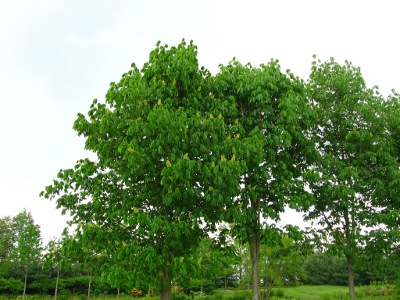Yellow Buckeye Tree (Aesculus flava)
Category: Deciduous Trees

Yellow buckeye is also known as Aesculus flava, common buckeye or sweet buckeye. It is a species of deciduous tree and belongs to sapindaceae family. The tree grows to a height of 20m to 47m and it is a native to Ohio valley as well as Appalachian Mountains of the Eastern United States. The ideal growth site for these trees is mesophytic forests.
The flowers blossom between April and May. The leaves have around seven leaflets which are 10-25cm long and broad. The flowers produced by this tree are 2-3cm long and the stamens are shorter than the petals. Normally the flowers are produced in panicles in spring, which are yellow to yellow green in color.
The fruit is brown with a whitish basal scar, round or oblong capsule 5-7 cm diameter, smooth and spineless, and it has 1-3 nuts like seeds. This fruit is normally poisonous to humans but when it goes through a leaching process it can be edible without any dangers.
The soils should be well drained, average to medium moisture, and the sun should be either full or partial. The preferred soils are humsy-sandy loams. The tree is very difficult to transplant since it is tap rooted. During dry conditions, the foliage depreciates but in wet conditions it scorches.
Since the tree has a lot of litter (fruits and leaves falling), it is not recommended for garden use. But then it can be used as a shade tree since it grows tall.
The problem that this tree faces is leaf blotch. But in other instances there is powdery mildew, leaf spots and anthracnose that can occur. The insects that attacks the tree and very troublesome are buckeye lacebug, Japanese beetles, Borers and bagworms. The good thing is that they are not very common. For the diseases, they are normally not severe and during drought conditions you might find the tree has leaf scorch.

 Back To Category Deciduous Trees
Back To Category Deciduous Trees